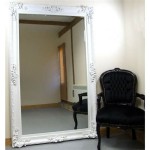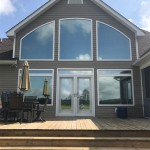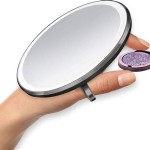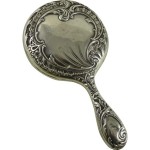DIY Mirror Wardrobe Doors: A Comprehensive Guide
Mirror wardrobe doors offer a multitude of benefits, from visually expanding a room and maximizing natural light to providing a full-length reflection for dressing. Opting for a do-it-yourself approach to installing mirror wardrobe doors can significantly reduce costs compared to professional installation, while also allowing for customization based on specific space requirements and aesthetic preferences. This article provides a detailed guide to creating and installing mirror wardrobe doors, covering essential considerations, required materials, and step-by-step instructions.
Planning and Preparation: Laying the Groundwork for Success
Before embarking on the construction process, thorough planning is crucial. Accurate measurements of the wardrobe opening are paramount. Measure the height and width of the opening at several points to account for potential imperfections or unevenness in the frame. Record the smallest measurement for both height and width as the final dimensions for the door construction. Consider the type of wardrobe door mechanism desired, such as sliding, hinged, or bi-fold. Each mechanism requires specific hardware and installation techniques that influence the door’s design.
Selecting the appropriate mirror type is also a critical aspect of the planning stage. Standard mirror glass is suitable for most applications, but tempered glass offers enhanced safety due to its resistance to shattering. Tempered glass breaks into small, relatively harmless pieces, minimizing the risk of injury. For enhanced visual clarity and reduced distortion, low-iron glass, which contains less iron oxide, can be considered. The mirror thickness also affects its durability and reflectivity. A thickness of 1/4 inch (6mm) is generally recommended for wardrobe doors, providing a balance between weight and stability.
Frame material selection is a matter of personal preference and budget. Wood frames offer a classic aesthetic and can be easily customized with paint or stain. Aluminum frames provide a sleek, modern look and are resistant to moisture and corrosion. PVC frames are a cost-effective alternative, offering durability and resistance to warping. Regardless of the material chosen, ensure it is strong enough to support the weight of the mirror and withstand regular use.
Gather all necessary tools and materials before starting the project. This includes: measuring tape, level, pencil, safety glasses, work gloves, saw (circular saw or hand saw), drill with appropriate drill bits, screwdriver, sandpaper, wood glue (if using wood frames), mirror adhesive, construction adhesive, painter's tape, and the selected hardware for the chosen door mechanism. Having all the tools readily available streamlines the construction process and minimizes potential delays.
Constructing the Mirror Wardrobe Doors: A Step-by-Step Guide
The construction process varies depending on the type of frame chosen. For wooden frames, begin by cutting the wood to the required dimensions according to the measurements taken earlier. Create a frame that is slightly smaller than the mirror itself, allowing for a small gap for expansion and contraction. Assemble the frame using wood glue and screws or nails, ensuring a square and secure connection at each corner. Sand the frame to create a smooth surface and apply a primer and paint or stain to achieve the desired finish.
For aluminum or PVC frames, typically these are pre-fabricated kits that require assembly. Follow the manufacturer's instructions for assembling the frame. Usually, this involves connecting the frame components using screws or brackets. Ensure the frame is square and the connections are tight and secure.
Once the frame is assembled, carefully clean the back of the mirror with a glass cleaner and a lint-free cloth. Apply mirror adhesive to the back of the mirror in vertical lines, spaced several inches apart. This adhesive is specifically designed for bonding mirrors to various surfaces without damaging the reflective backing. In addition to the adhesive, use construction adhesive to further secure the mirror to the frame. Apply the construction adhesive around the perimeter of the frame, creating a bead that will provide additional support.
Carefully position the mirror onto the frame, ensuring it is centered. Apply gentle pressure to the mirror to ensure a secure bond with the adhesive. Use painter's tape to hold the mirror in place while the adhesive cures. Refer to the adhesive manufacturer's instructions for the recommended curing time, typically 24 to 48 hours.
Installing the Mirror Wardrobe Doors: Ensuring Proper Functionality and Alignment
The installation process depends on the chosen door mechanism. For sliding doors, install the upper and lower tracks according to the manufacturer's instructions. Ensure the tracks are level and aligned for smooth operation. Attach the rollers to the top and bottom of the door, ensuring they are securely fastened. Carefully lift the door and insert the rollers into the tracks. Adjust the rollers as needed to ensure the door glides smoothly and remains aligned.
For hinged doors, install the hinges on the door and the wardrobe frame, ensuring they are properly aligned. Use a level to ensure the door hangs straight. Adjust the hinges as needed to correct any misalignment. Install any necessary door hardware, such as handles or knobs.
For bi-fold doors, install the pivot hardware on the door and the wardrobe frame, ensuring they are properly aligned. Follow the manufacturer's instructions for installing the track and rollers. Adjust the hardware as needed to ensure the doors fold and unfold smoothly and remain aligned.
After installing the doors, inspect their operation carefully. Check for any binding or rubbing. Adjust the tracks, hinges, or rollers as needed to ensure smooth and effortless operation. Tighten all screws and hardware to ensure a secure installation. Clean the mirror surface with a glass cleaner to remove any fingerprints or smudges.
Installing mirror wardrobe doors requires careful planning, precise execution, and attention to detail. By following these detailed instructions and taking necessary precautions, it is possible to create functional and aesthetically pleasing mirror wardrobe doors that enhance the appearance and functionality of any room. Prioritize safety throughout the project, using appropriate personal protective equipment and handling glass with care to avoid injury. When in doubt, consult with a professional carpenter or contractor for assistance.
Choosing the right hinges is crucial for hinged wardrobe doors. Consider factors like the door's weight, size, and frequency of use. Heavy-duty hinges are recommended for larger, heavier doors to ensure stability and prevent sagging over time. Soft-close hinges can also be incorporated to prevent slamming and provide a more luxurious feel.
For those opting for sliding doors, the track system is equally important. Ensure the track is sturdy and capable of supporting the weight of the door. High-quality rollers with ball bearings will provide smoother and quieter operation. Consider the type of track system that best suits your needs, such as top-hung or bottom-rolling, depending on the structural capabilities of your wardrobe.
When attaching the mirror to the frame, consider using specialized mirror mounting tape in addition to adhesive. This tape provides an instant bond and helps to distribute the weight of the mirror evenly across the frame. It also minimizes the risk of the mirror slipping or shifting during the curing process.

20 Diy Closet Mirror Door Makeover Angela Rose Home

Sliding Closet Door Makeover With Paint Tape Making Maanita

How To Update Mirrored Closet Doors The Good Bad And Ugly

Diy Barn Door With Mirror Field Court

Sliding Closet Door Makeover With Paint Tape Making Maanita

Diy Closet Doors Makeover My Repurposed Life

20 Diy Closet Mirror Door Makeover Angela Rose Home

6 Closet Door Diy Transformations Bob Vila

How Mirrored Closet Doors Can Enhance The Beauty Of Your Home

Diy Sliding Wardrobe Doors Double Track Triple Systems








